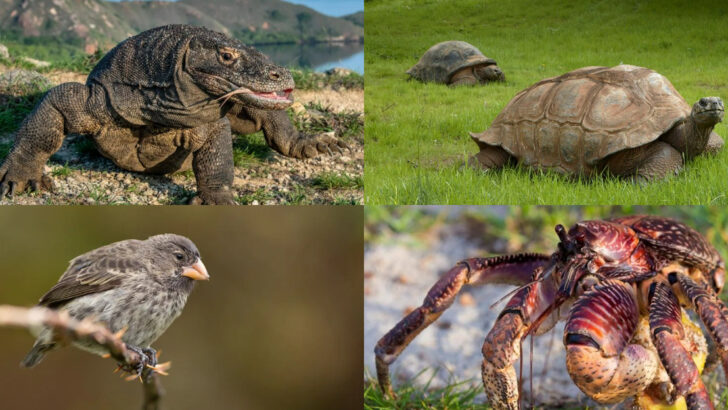Some animals look like they came straight out of a sci-fi movie—and many of them call islands home. When nature isolates a species on an island, evolution gets weird.
Birds forget how to fly, lizards shrink or grow to monstrous sizes, and mammals develop traits seen nowhere else on Earth. These creatures have adapted in ways that are both bizarre and brilliant, proving that island life changes the rules of survival.
From the Komodo dragon’s venomous bite to the aye-aye’s unsettlingly long fingers, island animals have evolved traits that are as strange as they are fascinating. Some became giants, others miniatures, and a few defied expectations altogether.
Let’s dive into the wild world of island evolution and meet 21 creatures shaped by isolation!
Komodo Dragon
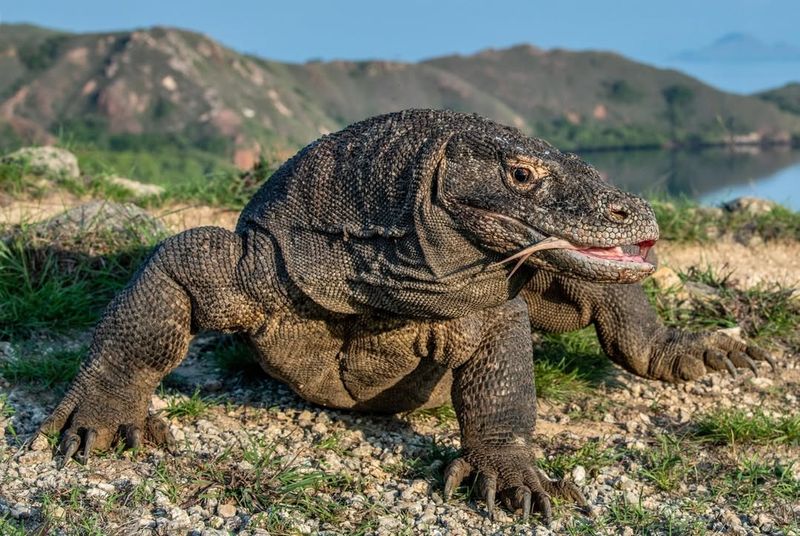
In the isolated realm of Indonesia’s Lesser Sunda Islands, the Komodo dragon stands as a formidable predator. This giant lizard, growing up to 10 feet long, is renowned for its powerful build and deadly bite.
Its saliva teems with toxic bacteria, a lethal weapon that ensures a swift demise for its prey. This evolutionary trait compensates for their slow pace, turning them into efficient hunters.
Living in such a challenging environment has honed their senses and survival tactics. The Komodo dragon epitomizes adaptation, showcasing nature’s prowess in crafting specialized survival mechanisms.
Aldabra Giant Tortoise
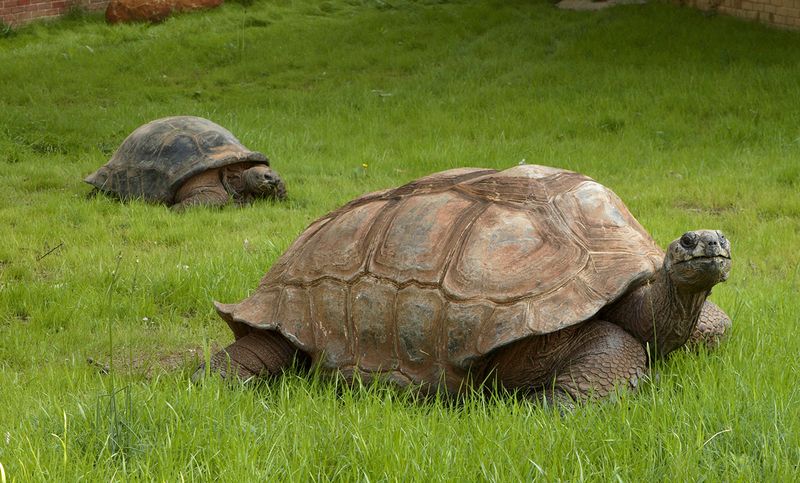
Residing on the remote Aldabra Atoll, these tortoises are among the largest in the world, with some weighing over 500 pounds. Their colossal size is an evolutionary advantage, deterring predators and aiding in foraging.
With a lifespan extending over 100 years, these tortoises have adapted to a scarcity of resources by storing fat. Their thick, domed shells protect them from the harsh sun and potential threats.
These gentle giants represent the slow pace of island evolution, thriving in seclusion where competition is minimal. Their presence on the atoll is a testament to endurance and adaptation.
Galápagos Finches
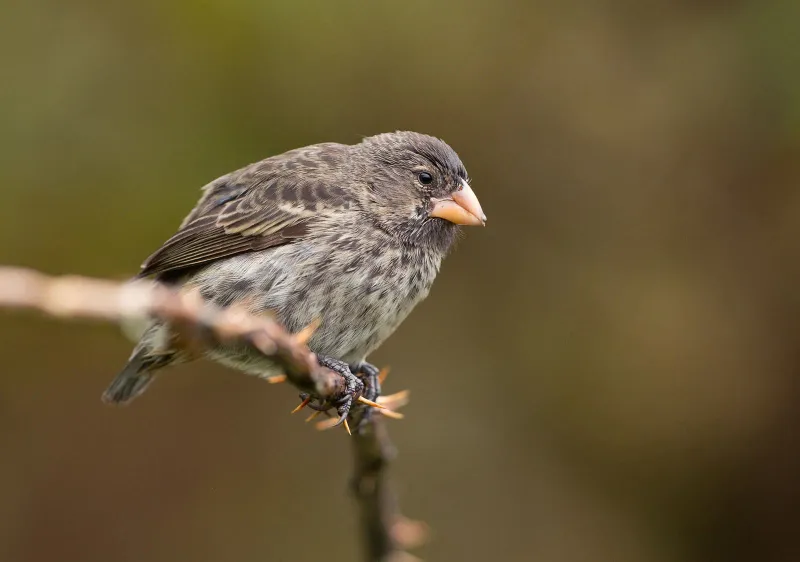
On the Galápagos Islands, finches have become a symbol of adaptive radiation. Each species exhibits a unique beak shape, perfectly suited to its feeding habits, from cracking seeds to sipping nectar.
This diversity arose from a common ancestor, adapting to the varied island niches. The finches illustrate how isolation can drive evolutionary changes, leading to species diversification.
These birds have become a cornerstone in the study of natural selection, embodying Darwin’s theories. The finches’ beak variations are a visual guide to understanding the power of adaptation and evolutionary pressures.
Kakapo
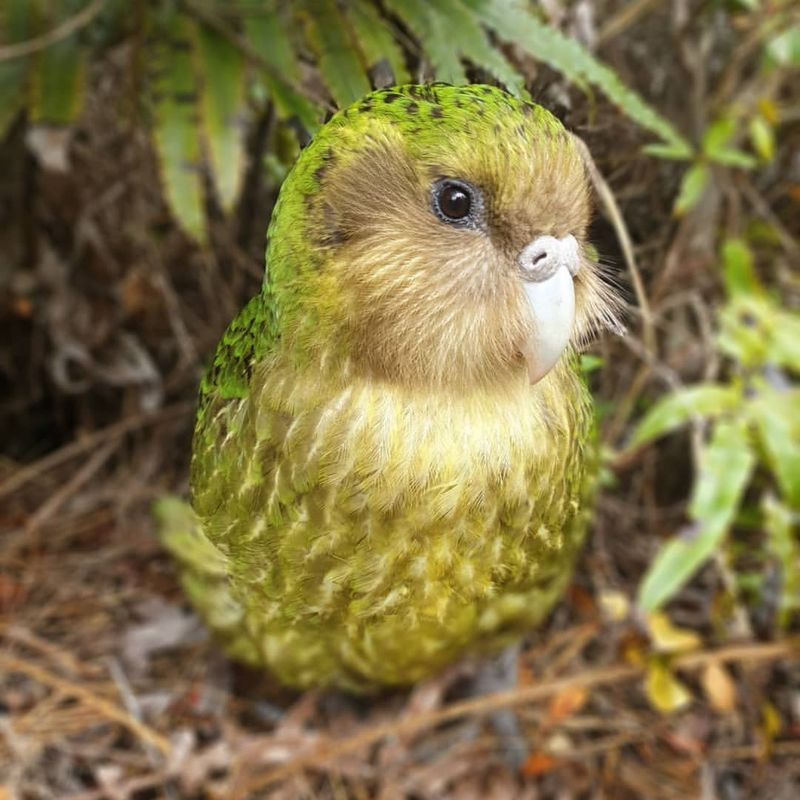
New Zealand’s flightless Kakapo parrot is an emblem of unusual evolution. Adapted to a predator-free environment, these parrots are nocturnal and ground-dwelling, a rarity among birds.
Their mossy green feathers offer excellent camouflage in the forest. With a lifespan of up to 90 years, they reproduce slowly, relying on specific fruiting cycles for breeding.
Unfortunately, their unique traits became vulnerabilities with the introduction of predators. Conservation efforts are now crucial to their survival.
The Kakapo’s journey highlights the delicate balance of island ecosystems and the impact of external threats.
Madagascar’s Aye-Aye
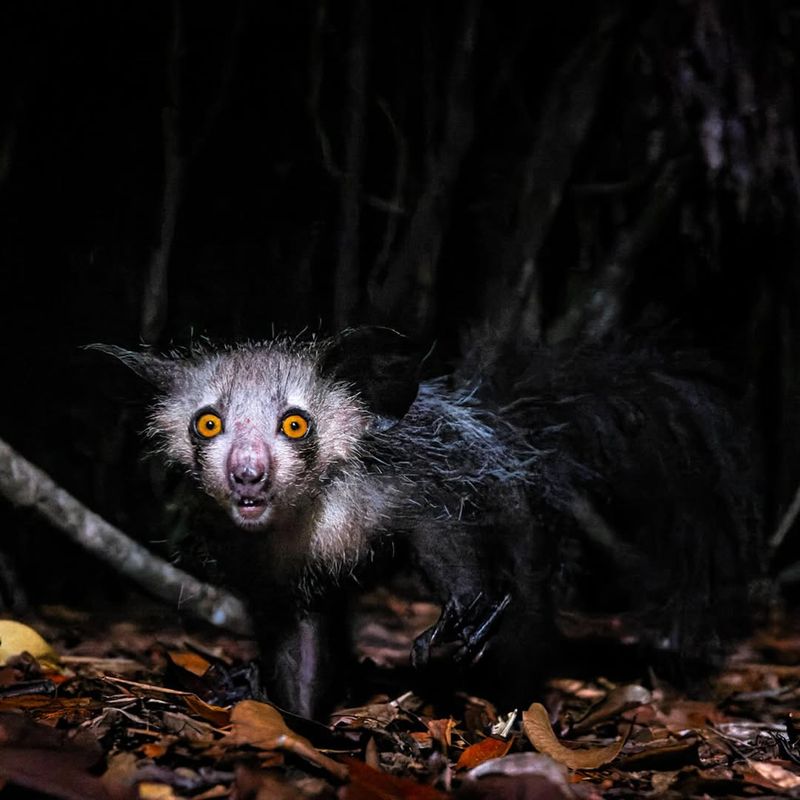
Endemic to Madagascar, the Aye-Aye is a nocturnal lemur with bizarre features. Its elongated middle finger is used to tap on tree bark, detecting insect larvae within.
This evolutionary niche has equipped it with a keen sense of hearing and touch. Often mistaken for a rodent, its large eyes and bushy tail give it an eerie appearance.
Despite its odd looks, the Aye-Aye plays a vital role in controlling insect populations. However, it faces threats from habitat loss and local superstitions.
This creature embodies the unique, often strange outcomes of isolated evolution.
Tasmanian Devil
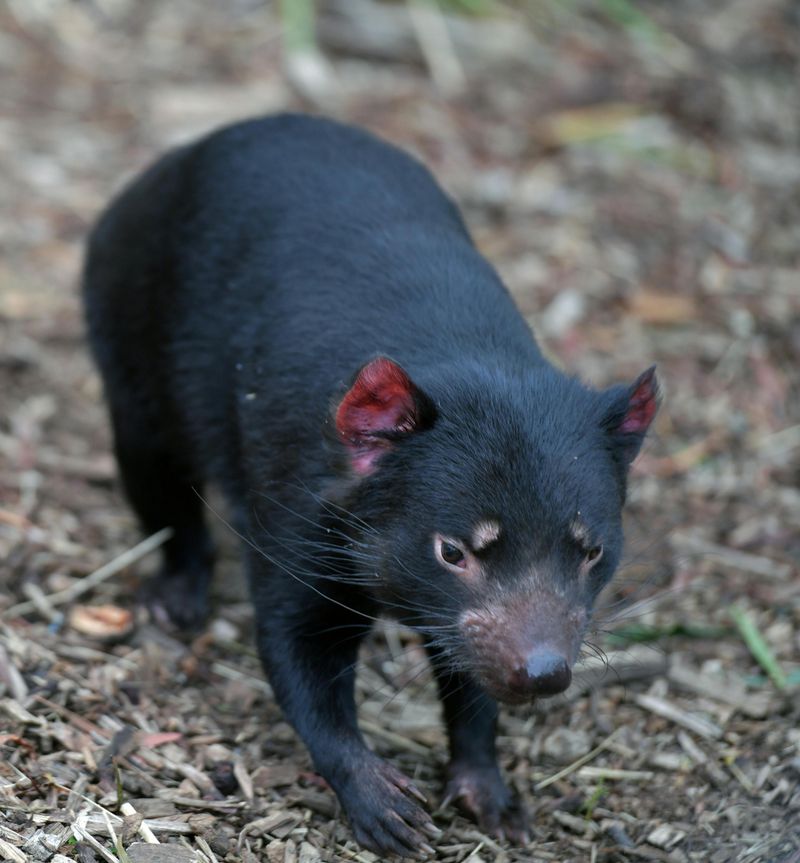
Famed for its aggressive nature and powerful jaw, the Tasmanian Devil, native to Tasmania, is a formidable scavenger. Its ferocity is matched by a keen sense of smell, allowing it to locate carrion over long distances.
Living in isolation has necessitated a robust immune system to combat diseases, though a contagious facial tumor disease now threatens their survival. Their loud screeches and nocturnal habits add to their fearsome reputation.
The Tasmanian Devil showcases how isolation can lead to both remarkable adaptations and vulnerabilities, emphasizing the fragile balance of island ecosystems.
Seychelles Coconut Crab
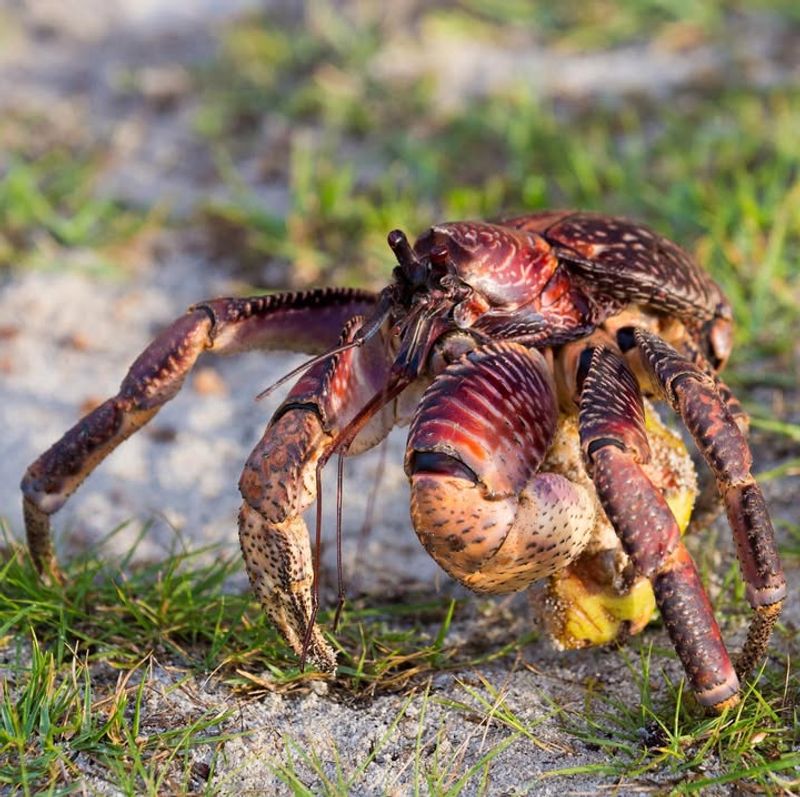
The coconut crab, inhabiting the Seychelles, is a land-dwelling crustacean renowned for its size and strength. Capable of cracking open coconuts with its powerful claws, it has adapted to a terrestrial lifestyle.
These crabs are skilled climbers, often scaling trees in search of food. Their sense of smell is highly developed, guiding them to potential meals.
Isolation has led to their impressive size, as there are fewer predators to contend with. However, habitat destruction poses a threat.
These crabs illustrate how island life can lead to unique evolutionary paths, resulting in extraordinary traits.
Galápagos Marine Iguana
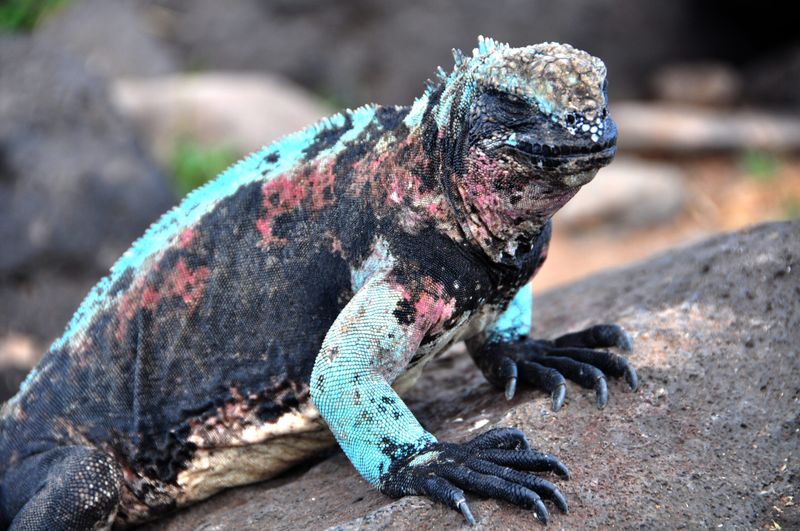
Unique to the Galápagos Islands, the marine iguana is the only lizard that forages in the sea. Adapted to a diet of algae, these reptiles have flattened tails and strong limbs for swimming.
Their ability to expel excess salt through nasal glands is crucial for survival in a saline environment. Sunbathing on the rocks helps regulate their body temperature after cold swims.
These iguanas exemplify how isolation fosters specialized adaptations, allowing them to thrive where others cannot. They are a living testament to evolutionary ingenuity, having carved out a niche in a challenging habitat.
Hawaiian Honeycreepers
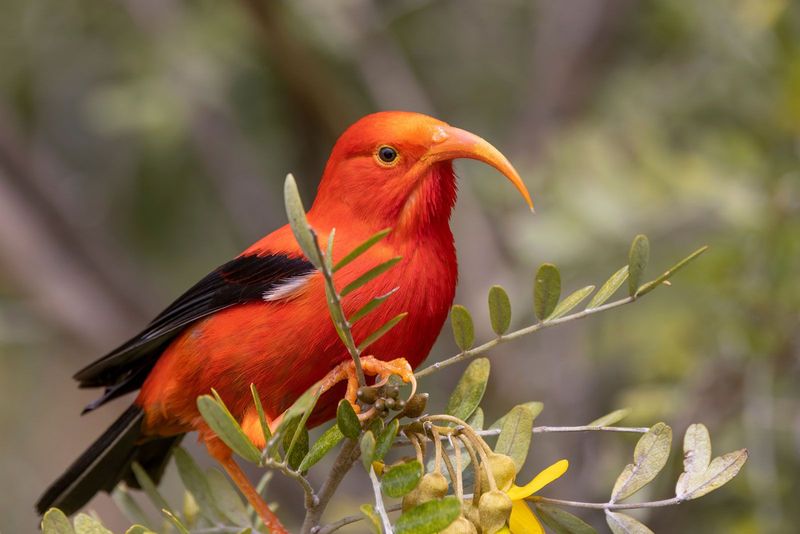
Hawaii’s honeycreepers are a testament to adaptive radiation, diversifying into numerous species from a single ancestor. These birds exhibit a wide range of beak shapes and sizes, each adapted to specific feeding strategies, from nectar sipping to insect catching.
Vibrant plumage adds to their allure, making them a visual delight. However, habitat loss and invasive species threaten their survival, highlighting the fragility of island ecosystems.
The honeycreepers illustrate how isolation can lead to incredible diversity, yet also leave species vulnerable to external changes. Their story underscores the importance of conservation efforts.
Santa Cruz Island Fox
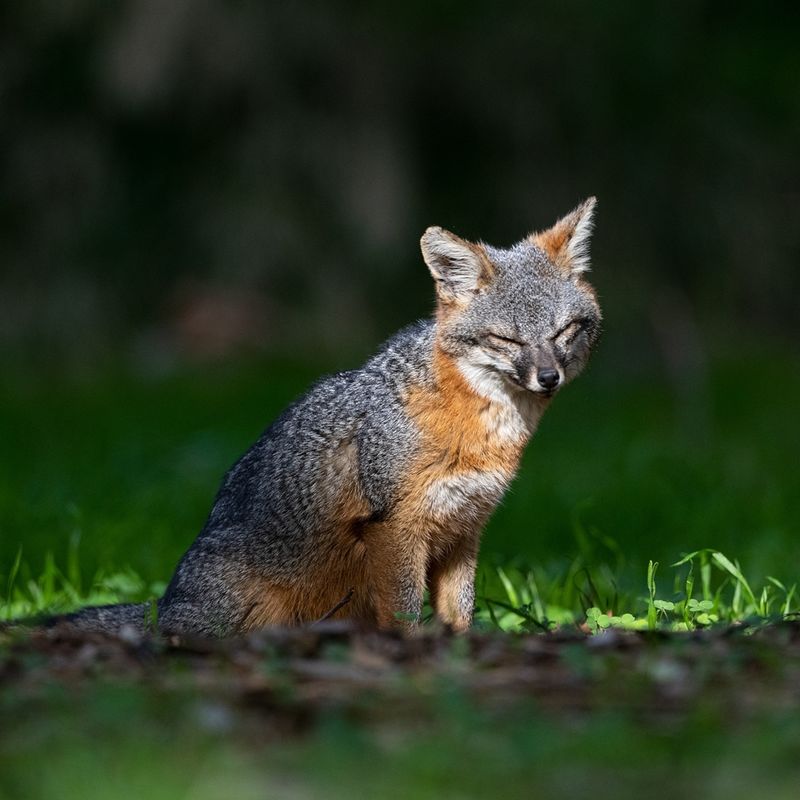
Exclusive to California’s Channel Islands, the Santa Cruz Island fox is a diminutive creature with a keen sense of smell. Having evolved without large predators, these foxes exhibit little fear of humans, a trait that has become a vulnerability.
Their diet is diverse, ranging from fruits to small mammals. Conservation efforts have been vital in boosting their population after a drastic decline.
The island fox exemplifies how isolation can result in unique adaptations but also increased susceptibility to external threats. Their recovery story is a beacon of successful conservation initiatives.
Mauritius Dodo
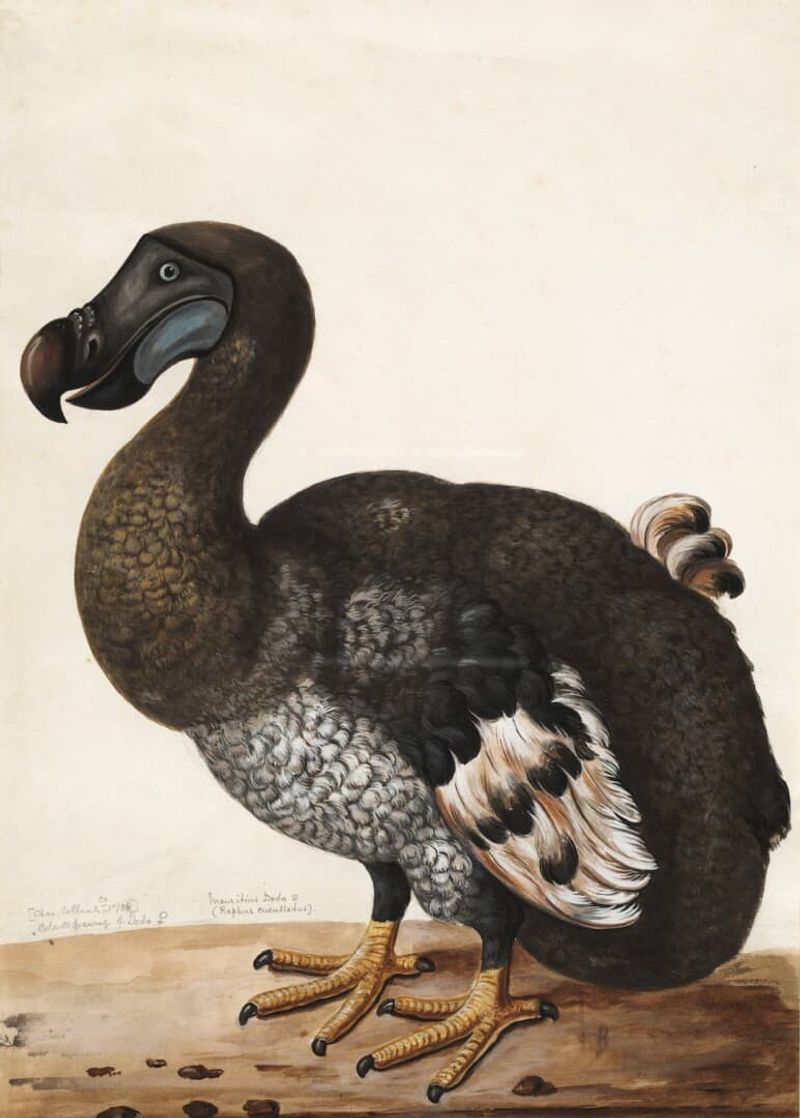
The dodo, once native to Mauritius, became synonymous with extinction due to its rapid disappearance. This flightless bird evolved in an ecosystem with no predators, leading to its bulky frame and ground-dwelling habits.
Its trusting nature and inability to fly made it easy prey for humans and introduced animals. The dodo’s extinction in the 17th century was a stark lesson in the impact of human activities on isolated species.
Though gone, the dodo remains a poignant symbol of the delicate balance within island ecosystems and the irreversible consequences of human interference.
New Caledonian Crow
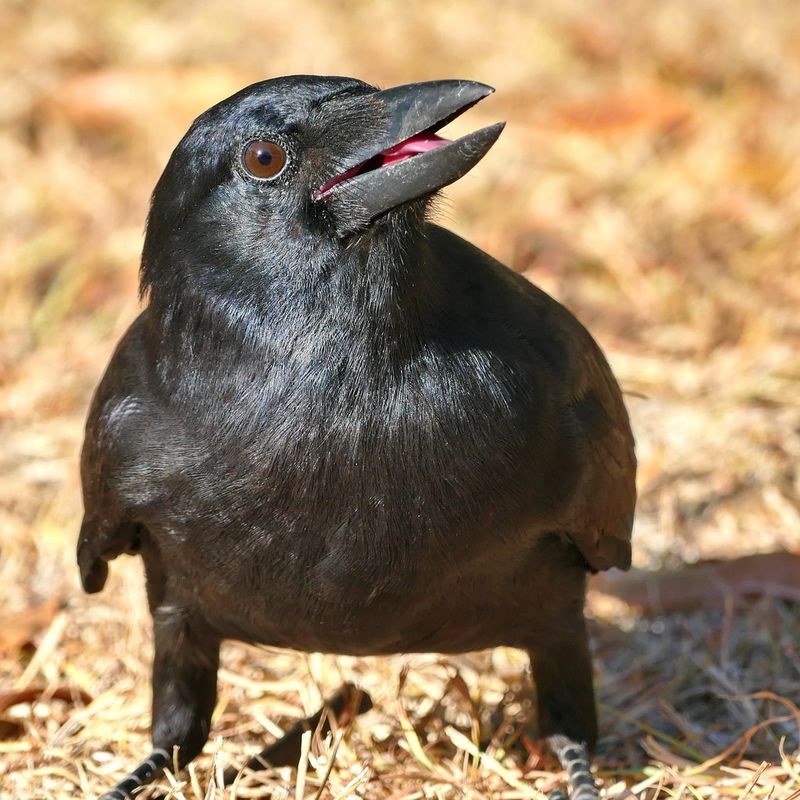
Renowned for its intelligence, the New Caledonian crow showcases advanced tool-making skills. In the forests of New Caledonia, these crows craft sticks and leaves into tools for extracting insects.
Their cognitive abilities rival those of some primates, demonstrating remarkable problem-solving capabilities. The isolation on this Pacific island has fostered unique adaptations, allowing these birds to exploit ecological niches.
Their use of tools is not just a survival tactic but a glimpse into the cognitive evolution of avian species. The New Caledonian crow underscores the profound impact of environmental pressures on intelligence.
Flightless Cormorant
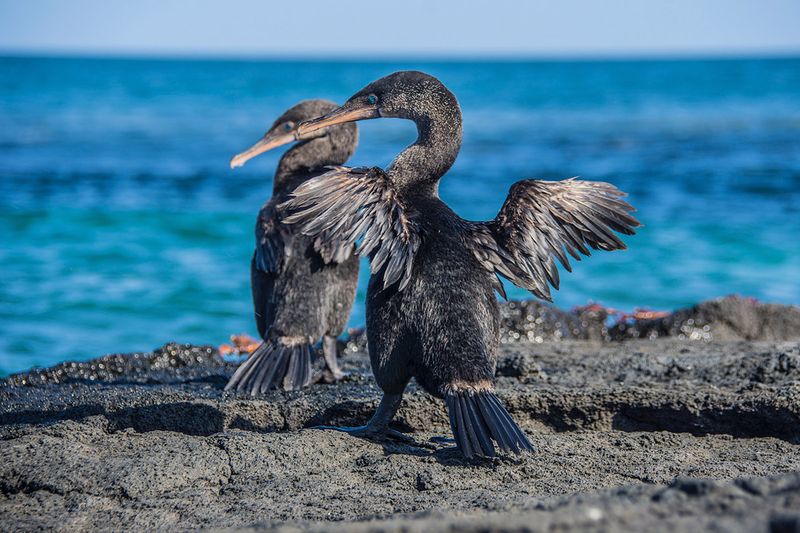
Native to the Galápagos Islands, the flightless cormorant has evolved into a master swimmer. With reduced wings unsuited for flight, they excel in diving for fish in coastal waters.
This remarkable adaptation is a direct response to the abundant marine resources and lack of land predators. Their feathers have adapted to their aquatic lifestyle, aiding in swift underwater maneuvers.
While their flightless nature made them vulnerable to human activities, conservation efforts have helped stabilize their population. The cormorant’s evolution illustrates how isolation can lead to specialized traits that fit specific environments.
Pinta Island Tortoise
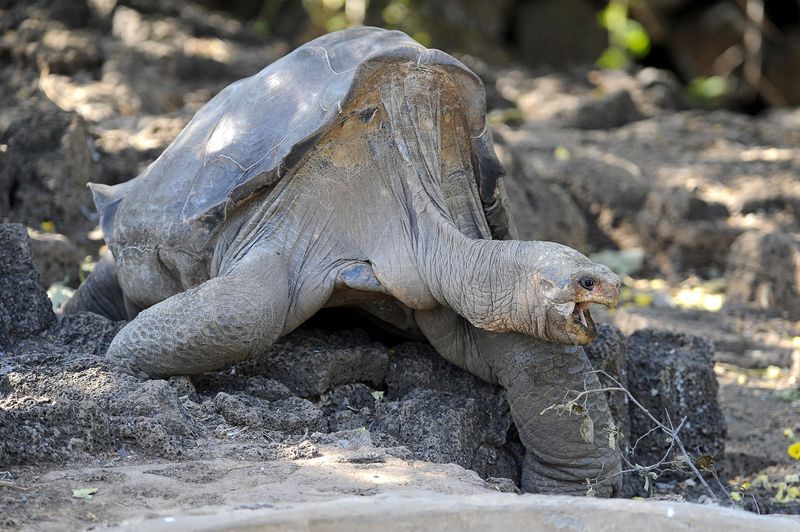
Lonesome George, the last known Pinta Island tortoise, became an emblem of conservation challenges. These tortoises evolved in isolation with elongated necks, reaching high vegetation.
Their adaptations were perfectly suited to their environment until human intervention introduced threats. George’s passing marked the end of a subspecies, a poignant reminder of the fragility of isolated populations.
Efforts to prevent similar extinctions have intensified, focusing on protecting habitats. The story of the Pinta Island tortoise underscores the importance of proactive conservation to preserve the unique evolutionary paths of island species.
Kiwi
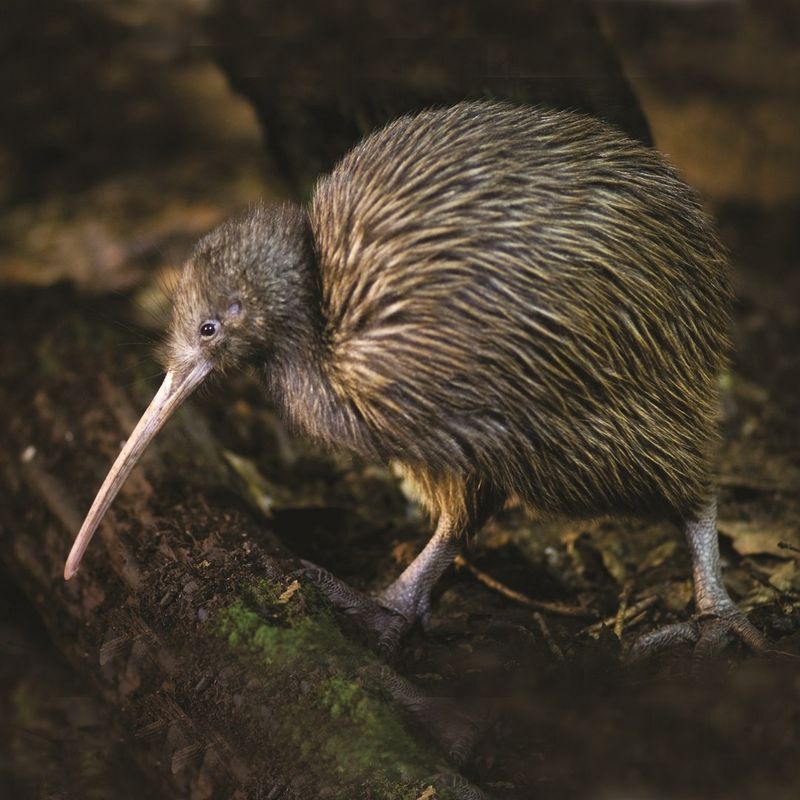
The Kiwi, an iconic bird from New Zealand, is unique for its flightlessness and nocturnal habits. Its long beak and highly developed sense of smell help it forage for insects and worms at night, making it a perfect fit for the dense forest environment.
Unlike other birds, the Kiwi has evolved bone marrow similar to mammals, and its plumage resembles fur more than feathers. This adaptation allows it to navigate the forest floor with ease and remain camouflaged from potential threats.
Endemic to New Zealand, Kiwis have no natural predators on the islands, allowing them to evolve into ground dwellers with unique traits that set them apart from other avian species.
Fernandina Island Galápagos Penguin
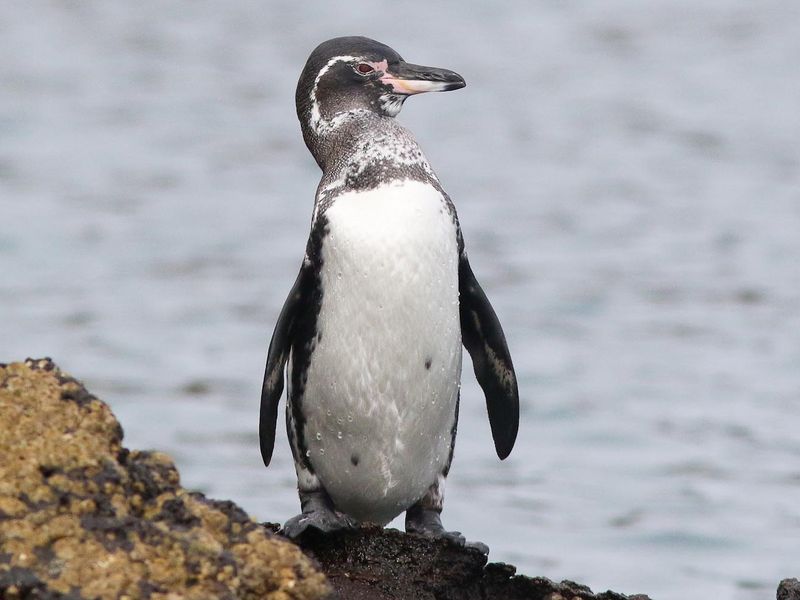
© eBird
The Galápagos penguin, residing on Fernandina Island, is the only penguin species found north of the equator. Evolving in the archipelago’s unique climate, these penguins have adapted to warmer temperatures.
Their smaller size aids in heat dissipation, while their behavior has evolved to include panting to cool down. The penguins’ survival relies on the cold Humboldt and Cromwell currents, rich in nutrients.
Threats from climate change and human activities have led to conservation efforts to protect their habitat. The Galápagos penguin exemplifies how species adapt to surprising conditions, thriving in unexpected locales.
St. Kilda Wren
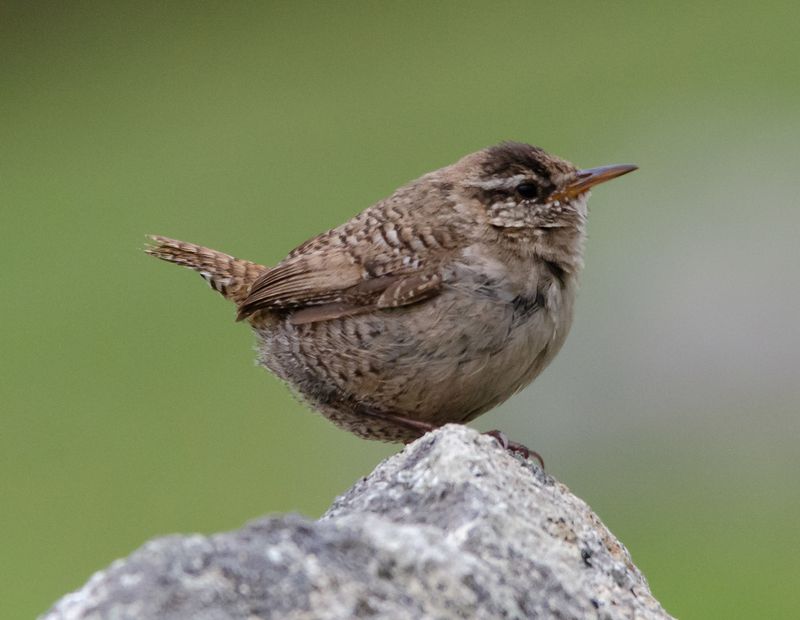
In the remote St. Kilda archipelago, this wren has adapted to the rugged, windswept landscape.
Its plumage is thicker than that of mainland wrens, providing insulation against the harsh weather. The wren’s song is a familiar melody amidst the backdrop of crashing waves and rocky cliffs.
With limited predators, it has thrived in this isolated setting. However, habitat changes pose a threat to its population.
The St. Kilda wren is a testament to the resilience of species that endure in challenging environments, adapting to the demands of their unique island home.
Culebra Island Giant Anole
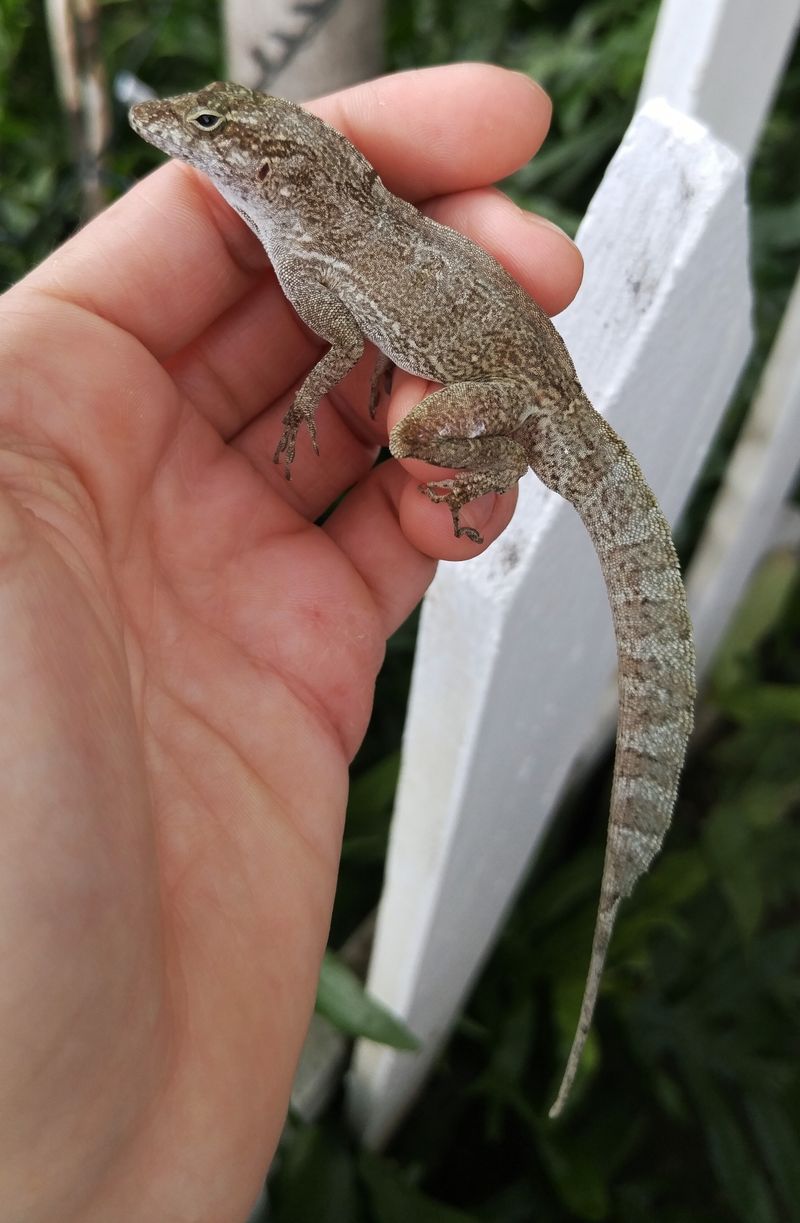
On Culebra Island, the giant anole is a striking presence with vibrant green scales and a robust body. Its size differentiates it from mainland relatives, an adaptation to the island’s limited predation pressures.
This anole’s diet is diverse, ranging from insects to small vertebrates. The lush vegetation of Culebra provides ample hiding spots and hunting grounds.
Despite its adaptations, habitat destruction remains a concern. The giant anole’s evolution underscores how island environments can lead to distinctive traits, crafting unique island inhabitants adapted to their specific ecosystems.
Lord Howe Island Stick Insect
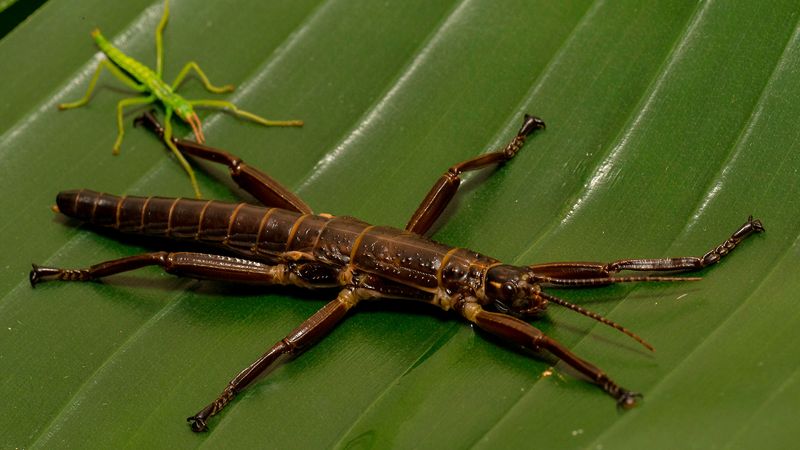
Once thought extinct, the Lord Howe Island stick insect, or “tree lobster,” was rediscovered on Ball’s Pyramid. Its long, slender body expertly mimics twigs, a perfect camouflage against predators.
This insect’s survival story is a beacon of hope for conservationists. Its nocturnal habits and herbivorous diet contribute to its unique ecological niche.
Efforts to reintroduce them to their native habitat are ongoing, shedding light on the delicate balance of island ecosystems. The stick insect illustrates the unexpected resilience of species, surviving against the odds and highlighting the importance of preserving biodiversity.
Cebu Flowerpecker
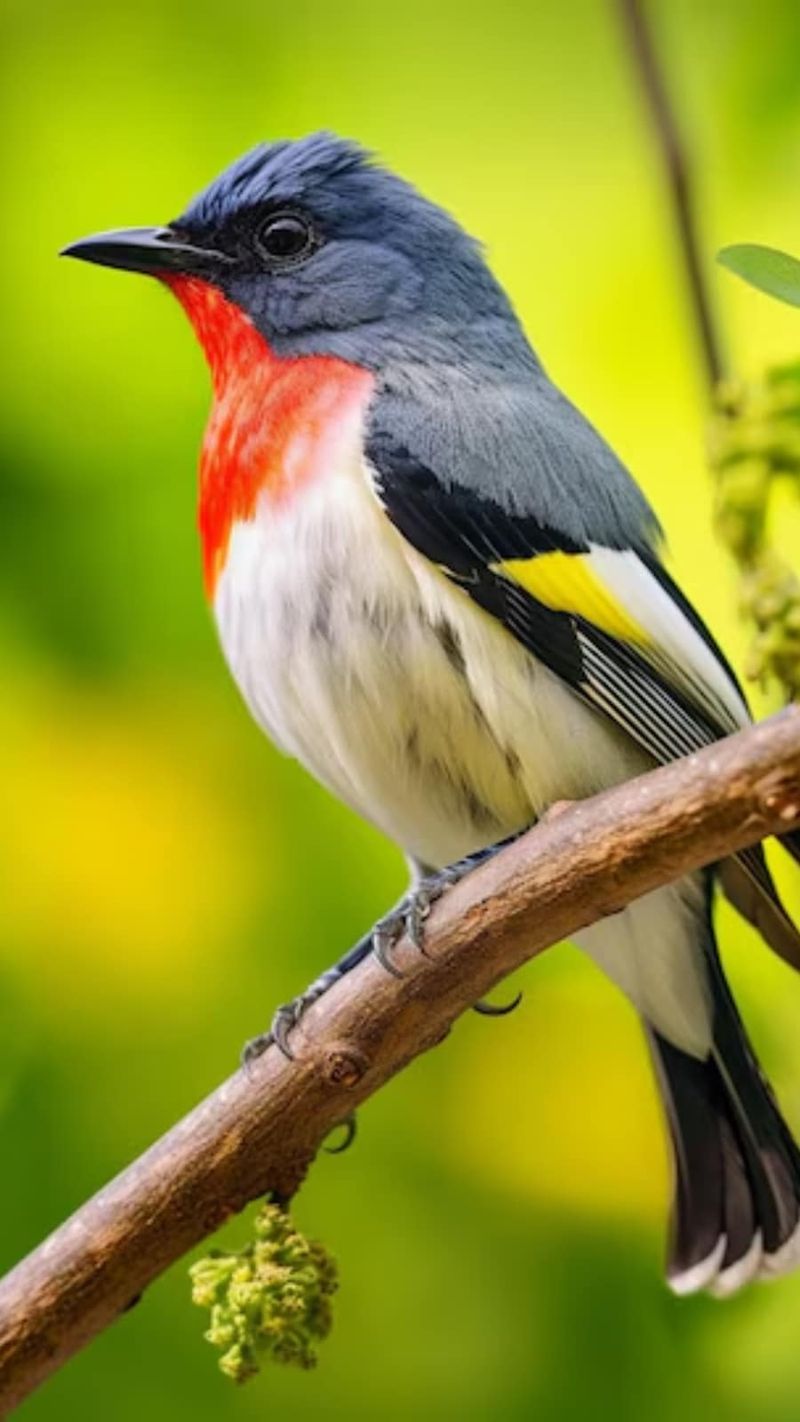
This critically endangered bird from Cebu Island in the Philippines is a vibrant jewel with striking plumage. Evolved in isolation, its diet is closely tied to specific fruiting trees.
Habitat destruction has drastically reduced their population, emphasizing the need for immediate conservation. The flowerpecker’s survival is a race against time, underscoring the urgent need for habitat protection.
Its vivid colors and unique dietary needs illustrate how isolation can lead to specialized adaptations. The Cebu flowerpecker is a poignant reminder of the fragile balance in island ecosystems and the urgent need for conservation efforts.
Fiji’s Blue-Lipped Skink
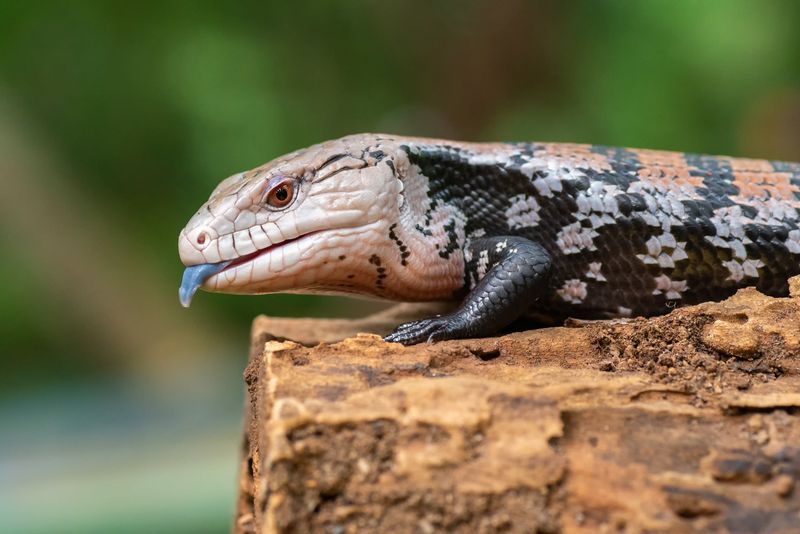
Fiji’s Blue-Lipped Skink is a small, enigmatic reptile with vibrant blue lips, found only in the tropical forests of Fiji. Its shimmering scales reflect shades of green and blue, providing excellent camouflage among the island’s lush vegetation.
Remarkably agile, this skink can navigate through dense foliage with ease, catching insects with precision. The striking blue hue around its lips is not just for show; it plays a crucial role in mating displays, attracting potential partners.
Living in isolation, the Blue-Lipped Skink has adapted to a diet rich in local insects, ensuring its survival in a competitive ecosystem.

